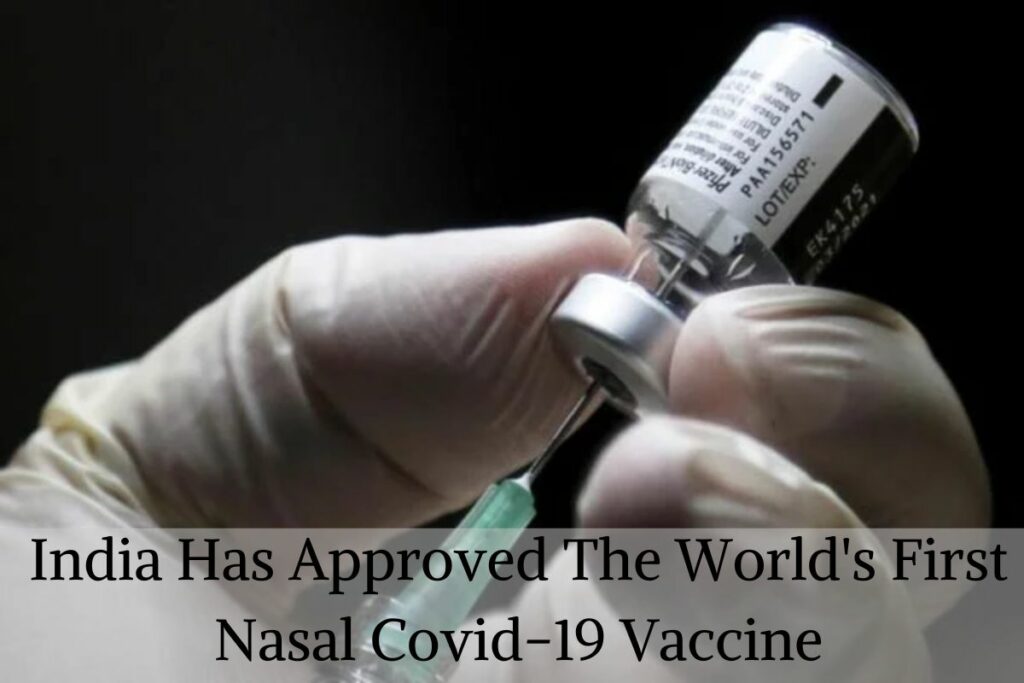On Tuesday, September 6, India approved the first nasal COVID-19 vaccine worldwide for emergency use. This vaccine is based on Washington University in St. Louis technology that has been licensed. The vaccine can potentially stop infection, stop the transmission cycle, and avoid lung damage because it is administered through the nose, where the virus enters the body.
In partnership with Bharat Biotech International Limited, an international leader in vaccine research and a producer of vaccines for infectious diseases, scientists at Washington University developed the nasal vaccine. Early studies at Washington University demonstrated that this vaccine’s nasal administration induces a potent immune response throughout the body, particularly in the nose and respiratory system.
The nasal vaccine stopped illness from taking root in the body in animal trials. While injectable COVID-19 vaccines have been demonstrated to protect against severe disease, infection and possibly transmission are anticipated to be less likely to be prevented by this mode of administration.
The Herbert S. Gasser Professor of Medicine, a professor of molecular microbiology, pathology, and immunology, and a co-inventor of the vaccine, Michael S. Diamond, MD, PhD, said that nasal vaccines “induce the type of protective immunity that we think will prevent or limit infection and also curb pandemic transmission of this virus.” “
The primary purpose of vaccines is to prevent hospitalization and death, but it would be even better if we could reduce infection. The virus is more likely to produce new varieties that continue the pandemic the more people infected. The superb strategy to safeguard those who can’t get immunized or are still in danger of serious illness despite immunization is to stop the virus from spreading.
The vaccine was developed by Diamond, the Washington University School of Medicine’s Distinguished Professor of Radiation Oncology David T. Curiel, MD, PhD, and members of their research teams. The COVID-19 virus, SARS-CoV-2, enters cells through a spike protein.
The researchers modified the adenovirus responsible for the common cold to incorporate that spike protein. However, the researchers altered the adenovirus so that it could no longer spread disease. The spike protein is carried into the nose by the unharmful adenovirus, which enables the body to generate an immune response against the SARS-CoV-2 virus without getting sick.
The spike protein has undergone two modifications in the new vaccine that stable it in a specific shape that promotes the production of antibodies against it. The adenovirus was also genetically altered by the researchers to increase spike protein production. Both inventions aim to trigger a potent immunological reaction.
After experiments conducted in 2020 and 2021 under the direction of Diamond and Curiel showed that the vaccine works in mice and nonhuman primates, Bharat Biotech obtained a technology license from Washington University, improved the delivery system, and increased production. Bharat Biotech official confirmed this on his Twitter account. Shown Below;
#Announcement
Bharat Biotech’s iNCOVACC world’s first Intra Nasal vaccine receives approval for emergency use in India#BharatBiotech #incovacc #intranasalvaccine #Covid19Vaccine #worldsfirstintranasalvaccine #vaccineapproval #VaccinesWork #India pic.twitter.com/twwuKzKOxG— BharatBiotech (@BharatBiotech) September 6, 2022
A phase 3 trial with approximately 3,100 previously unvaccinated individuals receiving two doses of the nasal vaccine and a booster trial with some 875 persons receiving one dose of the nasal vaccine following two doses of another COVID-19 vaccine were both started by the company in India.
These studies, which ended in August, showed that the vaccine, whether administered as a primary shot or a booster shot, is secure and capable of triggering a potent immune response in people. The vaccine may be kept in a refrigerator, and the nasal administration method was created and developed to be economical, a crucial feature in low- and middle-income nations.
A significant benefit for the many people who prefer to avoid needles is that the vaccine only needs to be briefly inhaled to be administered. A crucial aspect of the vaccine’s design is that it can be updated quickly and efficiently when new variants appear by simply replacing the present spike protein with one from the new variant.
Although the vaccine was first licensed in India for those without vaccinations, it may be permissible to use it as a booster. According to Curiel, the reason why the pandemic has persisted is that new varieties keep emerging that are capable of spreading among those who have already had vaccinations and infected many individuals.
“A nasal vaccine might be what we need to end the transmission cycle once and for all. This vaccine, in particular, has been tailored for environments with constrained resources. The prospect of this vaccine reaching the 3 billion people who are not yet fully protected against COVID-19 and aiding in eradicating this pandemic excites me greatly.
Because they strengthen defences directly where the virus is most likely to enter the body, inhaled vaccines might be more effective at preventing infection than injection-only vaccines. This week, China approved using a COVID-19 booster vaccination administered via oral inhalation.
This oral vaccination was intended to improve upper respiratory tract protection and lessen transmission, much like the nasal vaccine. Washington University is looking into the adenoviral nasal vaccination technique for a license in other nations, including the US.

